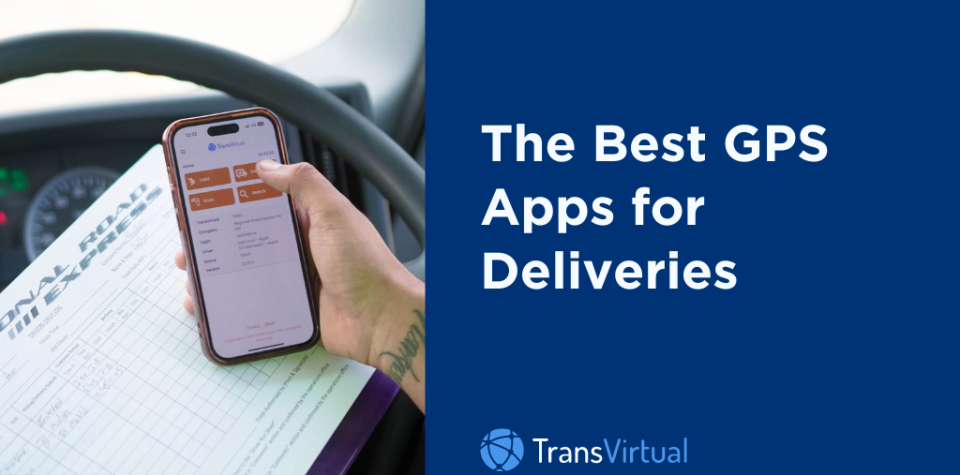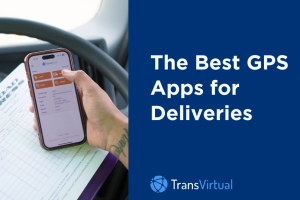Table of Contents
People in the logistics industry know that nothing matters more to customers than timely deliveries. Therefore, it’s important to know all delivery driver GPS options available and to be using tools that help you coordinate the most efficient delivery routes possible.
Today we’re running through one of the most important, yet easily forgotten, aspects of the delivery process — GPS, and putting the three most common GPS and mapping solutions head to head, so you can find what’s right for your delivery business. Let’s get to it.
Why is GPS Important?
What’s tricky about coordinating outbound deliveries is that drivers most likely have never been to the delivery location (or locations) before. And, it’s even more unlikely that a driver knows the quickest route from one destination to another when they’re doing multiple deliveries on the same route per day.
Decades ago, the solution might have been for a manager to sit down with a physical map. These days, modern day GPS has become a crucial part of the delivery process.
GPS saves logistics businesses crucial time during the delivery process, allowing drivers to navigate traffic conditions on the roads more efficiently and follow efficient routes with ease.
What’s more, modern GPS systems are only getting more sophisticated. Many tools provide real time traffic data to determine the fastest routes. They also boast features such as turn by turn directions, speed limit alerts, automatic rerouting and driving directions when a driver makes a wrong turn.
These new capabilities make GPS technology even more invaluable to the delivery process: helping businesses maximise their efficiency and deliver on customer expectations.
1. Google Maps / Apple Maps / Bing Maps
There are a variety of free map apps and GPS services available on mobile devices, many of which provide a convenient solution for small businesses.
Pros of Free Navigation Apps
Cost
With a price tag of literally $0, there’s nothing to lose when trying out a free mapping app. This accessible price point also means that free mapping apps are perfect for very small businesses and startups who are only doing a few deliveries a day.
Convenience
Most phones come with some kind of navigation app or apps already downloaded and ready to go, meaning that there’s minimal set up time required to get out on the road: perfect for new businesses or doing an unplanned delivery.
Cons of Free Mapping Apps
Limited Scale
Most free mapping apps only have customizable routes and allow a limited number of stops per trip, meaning that they aren’t great for businesses that are doing more than 5-10 deliveries per day.
Manual Data Entry
Free mapping apps don’t offer sophisticated, integrated systems through which to manage your business. This means that they require the manual entry of locations, and routing isn’t able to be shared between devices. This can take up excess time and introduces potential for human error. Additionally, free apps often lack offline maps, which can be a significant drawback for drivers in areas with poor network connectivity.
Data Sharing Limitations
Free apps, by nature of being designed for personal use, often don’t have the capabilities a logistics company needs. Namely, there’s often no way to communicate with customers and share delivery progress. This can lead to issues with increased rates of failed deliveries, and customer complaints.
2. Paid Mapping Apps
If you’re looking for something a little more sophisticated than the free version of what Google Maps has to offer, then there are a range of paid route planner solutions available.
Pros of Paid Mapping Apps
More Powerful
Paid routing and GPS software is designed for businesses, and offers a more powerful range of features, including advanced route planning software. This software allows drivers to take multiple routes, communicate with management, route sharing, and communication with customers — making it ideal for businesses operating on a medium scale.
They’re also essential for multi stop route planning, allowing your deliver driver to take the most efficient route without being stuck in traffic jams.
Route Optimisation
Many paid mapping software also come with route optimisation capabilities, allowing businesses to plan and execute routes more efficiently — ultimately leading to lower overheads and happier customers.
Cons of Paid Mapping Apps
Integrations
Paid mapping apps don’t offer the same level of integrations as other delivery systems. This can lead to data management issues due to transfer between platforms, or administrative headaches caused by chasing up lost paperwork.
Not All Inclusive
Whilst paid mapping software provides a range of features useful for managing the delivery process, it’s still not an all-inclusive solution. This can create issues with communication between different branches of a business.
Moreover, there paid apps that lack features like speed limit warnings and alerts, which can be crucial for maintaining safe driving practices.
3. Transport Management Systems
A transport management system or TMS is different to the other two options we’ve discussed because it isn’t purely focused on mapping but also includes route optimization software. Instead, a TMS is a holistic solution with a range of features designed to centralise all of your transportation management needs.
We’d recommend a TMS if you’re running a logistics or transport business. The last thing you need is to waste time and other resources on endless admin work and siloed data, or risk giving customers service that falls short of the gold standard.
Pros of a TMS
One and Done
A TMS takes a holistic approach to GPS and routing by offering it as part of an integrated system: meaning faster and easier coordination traffic information between different areas of your business, and less time spent on data transfer.
Smart Data Management
Use a TMS to understand and measure important metrics from the delivery process, such as fuel consumption.
Better Communication
With features such as text alerts, track and trace, instant messaging, and a customer portal — a TMS enables the highest degree of communication both within your business and between you and your customers. Additionally, a TMS can provide you turn by turn navigation directions, ensuring drivers are following the most efficient routes.
Cons of a TMS
Cost
Unfortunately, a powerful map app service like a TMS is going to come with a price tag.
While many offer reasonable rates that account for the size of your operation — if you’re just getting started then a free app will probably be the way to go. Furthermore, some TMS solutions may not offer the ability to download maps for offline use, which can be a limitation for drivers in areas with poor connectivity.
Resistance to change and complexity
Implementing a Transportation Management System (TMS) app for GPS tracking often faces resistance from employees due to privacy concerns and fears of micromanagement. Additionally, the complexity of the new technology can disrupt existing workflows, requiring significant effort for integration and training.
Clear communication and comprehensive training are essential to mitigate these challenges and ensure a smooth transition.
Make Navigation Simple
Accurate and fuss-free routing is key to being able to maximize your delivery efficiency over time by ensuring the most efficient routes. If you’re looking for a freight manager, courier, or transport enterprise looking for a TMS with the power to manage routing, communication, and much more — look no further than TransVirtual.
See in action, book a free personalised demo today and start planning your next deliveries.



